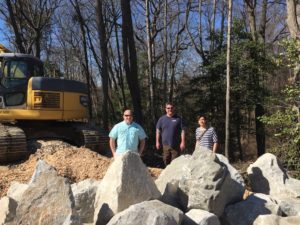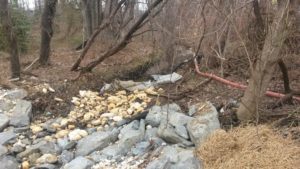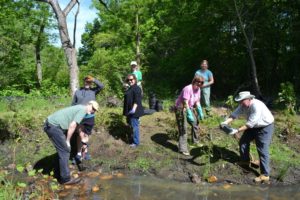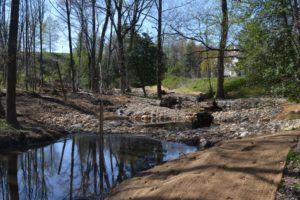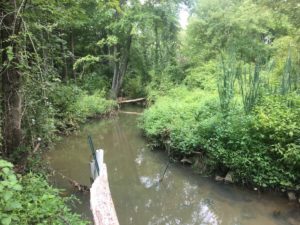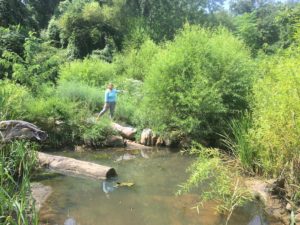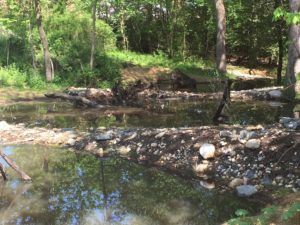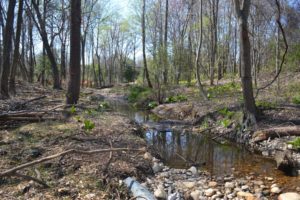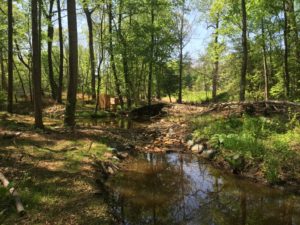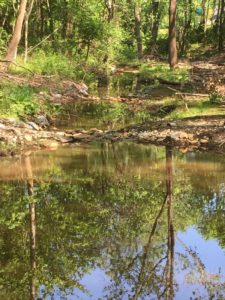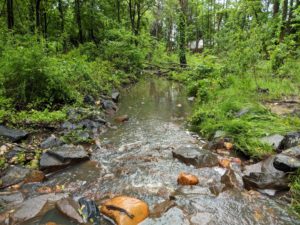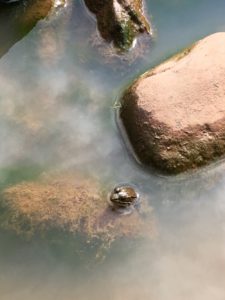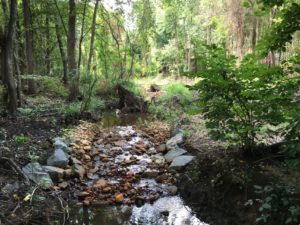Streams & Wetlands Restoration
Annapolis Harbour Center Stream and Wetlands Restoration
The Annapolis Harbour Center Stream and Wetland project improved habitat, increased floodplain connection, and prevents bed and bank erosion. This particular project focused on controlling flows and providing habitat at the bottom of existing outfalls, through the use of a step-pool storm conveyance (SPSC) in ephemeral reaches (where water flows only after rain event) and riffle weirs (barriers to alter the flow) and buried grade control structures (to prevent gully development and bed erosion) in the intermittent and perennial reaches (year round flow).
The design of the riffle weirs and floodplain grade control allows for minimal impacts to existing resources in the floodplain. The restoration of this site re-created or enhanced over 1,500 linear feet of stream and over five acres of forested wetland habitat that drains 169 acres of the surrounding area, of which nearly 85% is impervious.
This project, one of 30 high and medium priority projects listed in our 2008 Watershed Restoration Plan, is located within the Church Creek subwatershed of the South River and is part of our comprehensive Church Creek Initiative. This site is the “green remainder” of a much wider floodplain-wetland system that extended to nearby West Street and collected over 100 acres of forest runoff. The true headwaters (West Street to Riva Road) have been filled, and their drainage piped. The lateral areas of this reach have been filled on both the north bank (Home Depot) and south bank (Harbour Center) to allow space for retail development in the 1970s. Aris T. Allen Boulevard also now contributes flow from areas that should geographically be outside of the drainage shed. As a result, a scoured single-thread channel has developed where one did not exist historically.
This project has increased biological diversity of the channels and floodplain via consistent floodplain reconnection that provides yearlong recharge of floodplain soils. The restoration work increased instream pool depth, which expands fish habitat upstream without removing existing forest resources to reshape the channel. In addition, the varied size of substrate in the restored project (rock weirs, cobble riffles, fine sediment and organic substrate in the pools) enhances macroinvertebrate habitat. The site saw a decrease in bacteria levels and surge in fish population after the first year of restoration. The improved floodplain connection improved sediment trapping within the floodplain allowing cleaner and cooler water to enter Church Creek and the South River.
Construction was completed in early 2016.
Project Sponsors
Gallery
Please choose which project stage you’d like to view below.













